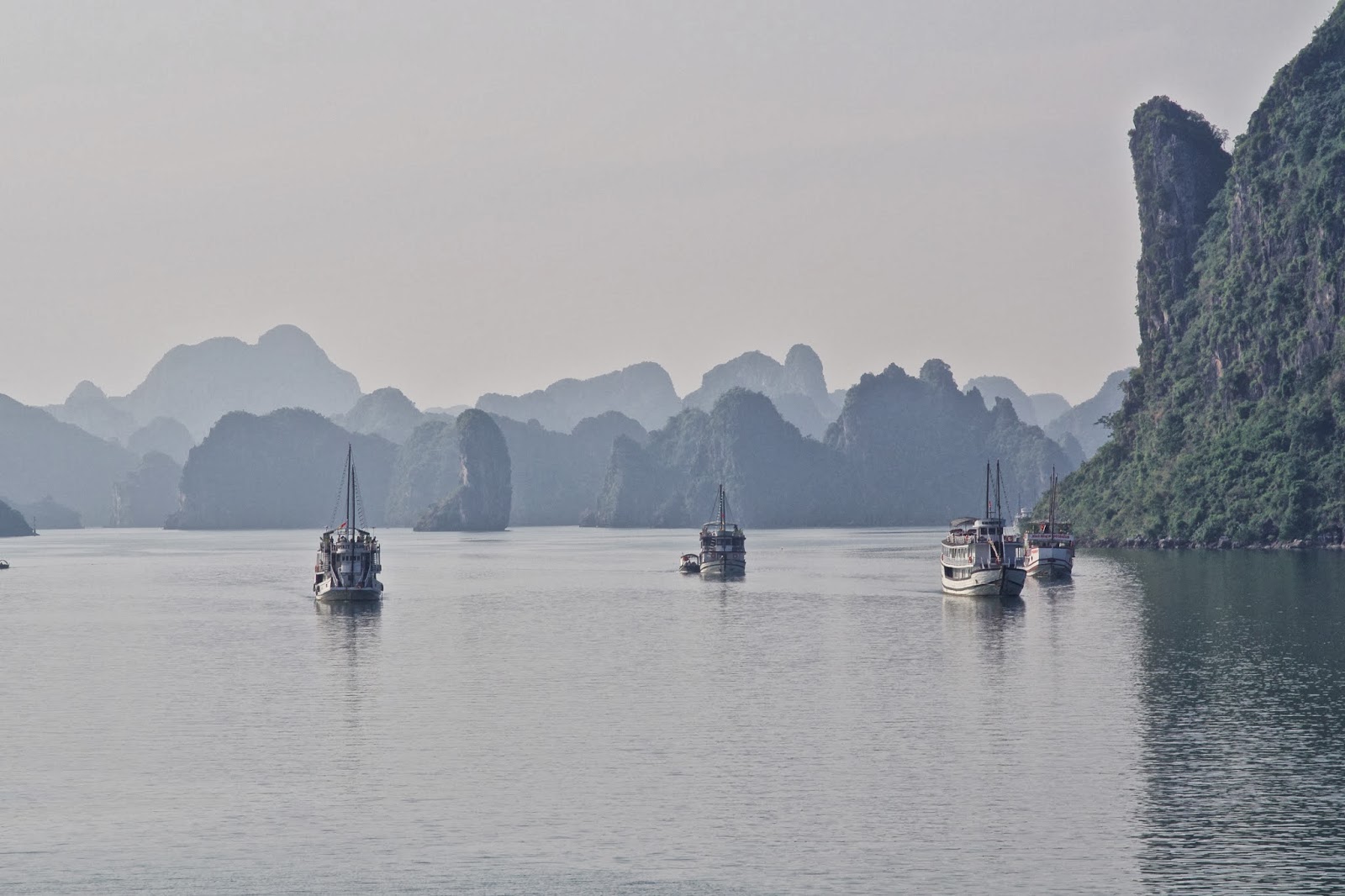Halong Bay is one of the places always found in coffee table books of places to visit before you die. Leaving Hanoi in the early morning we drove for almost 4 hours through the morning rush hour in Hanoi and then along the busy highway through
Bac Ninh which has become a centre for industrial development Bắc Ninh has lured $3.7 billion of industrial investment from Japan, South Korea and the United Staes including factories for Canon, Samsung, Pepsi Cola, and Nokia. It has also attracted 254 new local industrial projects and a labour force of more than 83,000.
We continued on roads which were being upgraded to Halong City passing through many smallholdings that prevailed in Vietnam following the return of land to the people in 1985. Before reaching Halong City we drove through the Vietnamese coalfields where the power stations are located and the air has an acrid smell reminiscent of the 1950's in Britain. Amidst all of this industry are workshops producing hundreds of statues of Buddha and mythical dragons.
We arrived on Tuan Chau island where the boats to Halong Bay embark from. It was a new holiday resort with hotels and a modern harbour busy with many tenders taking their passengers out to the hundreds of junks that make daily passages into the strange and beautiful seascapes of Halong Bay. Our boat like all others had been painted white; a great pity because the timber-built boats had a rich red/brown hue from the Lim and Teak woods. Apparently following its recognition as a world heritage site, the Halong Bay authorities had decreed that all boats must be painted white or lose their license. It was alleged that all the contracts had been won by someone closely linked with the Peoples Committee. At a stroke, the indigenous fleet of boats had lost a key part of their attraction and the peeling of the white paint on the junks was a sad indictment on the folly of trying to conform to the white cruise ships that serve the international market. How long will it be before we recognise that it is the diversity of culture, design and heritage that drives tourism not the universality of services and products that prop up the jaded American dream.
By noon the fleet was heading off for the the numerous limestone stacks that create a veritable water maze in Halong Bay, which is now spoken of as one of the new wonders of the world. By 2pm the sun had finally burnt off the cloud cover and for the next couple of hours, we were privileged spectators as we went deeper into the karst archipelago.
We anchored near to the floating fishing village of
Cua Van in the heart of Halong Bay and transferred to small rowing boats rowed by the local women. The village had a population of 750 and a floating school that provided for 72 children. Most of the families lived in floating houses moored alongside each other in a vague street pattern. The boats which were used for fishing were tethered to the houses. A lot of fishing took place at night with the catch taken into Halong City in the morning and other produce brought back to the village.
We visited one of the many caves in the late afternoon before anchoring for the night. The next day started with an hour's Tai Chi on the deck followed by a trip to one of the islands to climb to the summit before a swim on the beautiful beach which had been created by importing sand. Unfortunately, the day was overcast and the spectacular scenery didn't scrub up well for the camera. Nevertheless, this was an excursion not to be missed and probably the top attraction of any trip to Vietnam.
 |
| One of the many reasons why Vietnam wanted independence |
 |
| Junks agogo |
|
On the deck of the Jasmine
|
 |
| Limestone splendour |
 |
| One of the new 7 wonders of the world |
 |
| Dream on |
|
|
Cua Van - Floating villagers
|
 |
| Cua Van - rowing by foot |
 |
| First Light |
 |
| Morning climb |
 |
| Returning to Halong |















No comments:
Post a Comment
thanks